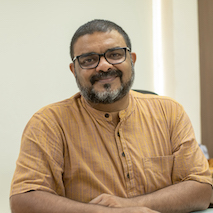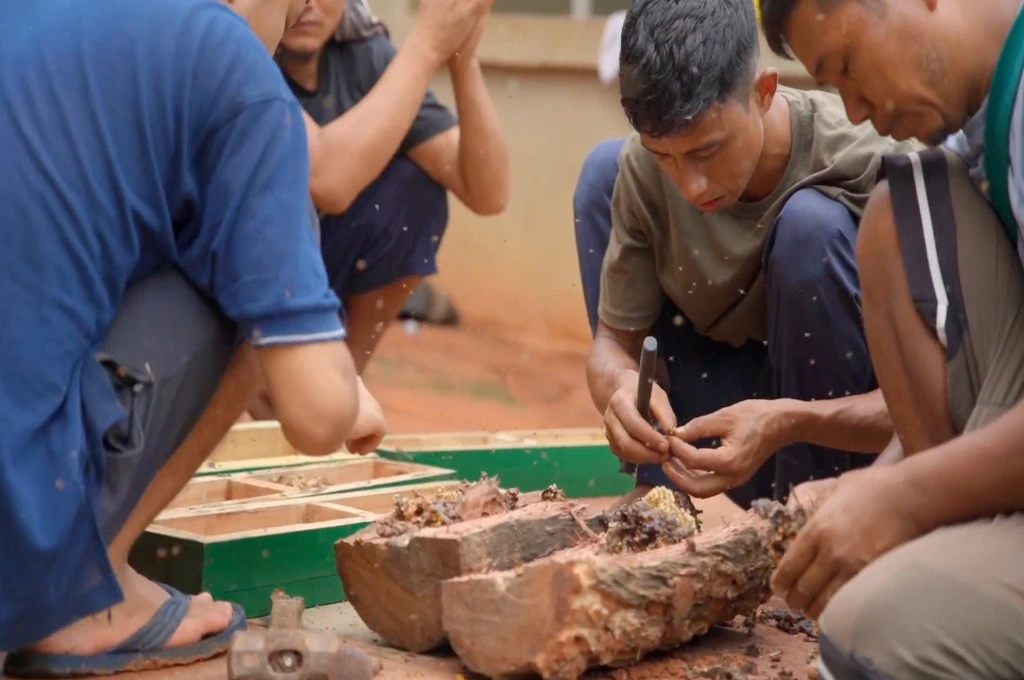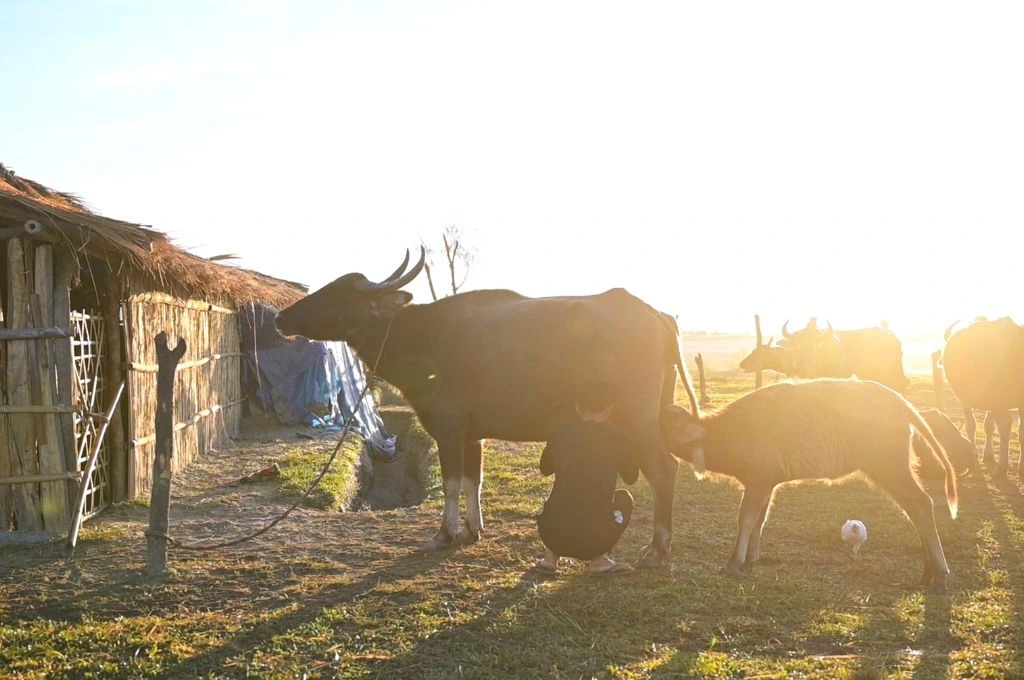There are various reasons due to which people migrate from their source (home village, town, or city) to the destination (place of work). One is when individuals who have access to economic resources and a wide social network shift to other countries to set up businesses or for jobs. Systems and policies promote this type of migration substantially, and it’s often seen as wealth creation.
Two is distress migration, usually considered a coping mechanism at the source region by poorer populations. In India, this is often observed in the rural–urban migration patterns, which could be a result of the failure of people’s primary occupation at source such as agriculture, or due to natural disasters and other factors. In this case, people are forced to migrate, and the reason for migration is seen as something that needs to be prevented.
The third kind of migration occurs when people migrate voluntarily from rural India to cities, driven by the aspiration to grow economically and socially. This form of migration is similar to the first type in that it is driven by knowledge about better opportunities outside the source area as well as one’s desire and ability to take advantage of those. In this case, migrants look for opportunities in urban labour markets, which may offer higher wages, better working conditions, and more significant career prospects.
This last pattern is extremely common in Odisha, with migration being a source of livelihoods for many.

The Ganjam–Surat district is one of the major labour migration corridors in the country. Over the past 10 years, in Jagannathprasad block in southern Odisha, 57.2 percent people have stayed for work outside the district for a period of 30 or more days continuously (as of data from 2020). The Baliguda block in Kandhamal district too has a significant proportion of indigenous communities that depend on migration as a means of livelihood—more than 36 percent of the households in the block have at least one person migrating for work outside the district. For those migrating, their primary occupation is often the one they have at the destination.
What has this meant for villages?
In the case of Odisha, in many blocks, we have estimated the annual remittance to be equal to what the government is spending in that block on ‘development’. Migrant workers earn approximately INR 6,000 in the beginning when they start to work in destination towns/cities, and graduate to INR 25–28,000 per month over time. Of this, they are able to remit INR 10–12,000 a month to their homes, which is a substantial amount of money. This has led to significant social, cultural, and economic changes in their home villages.
1. Improved standard of living
An increase in disposable incomes because of high remittances enables migrant workers to invest in the improvement of their houses, and lease more land. People who are semi-skilled get the opportunity to gain knowledge through working at the destination, which they utilise to make better investments and financial decisions back home. Some workers, for instance, choose to invest their money in setting up or buying small shops, rice mills, and autorickshaws in their home locations, which are run by family and friends, creating an additional source of income.
2. Improved social status
Migration to new places is reshaping traditional sociocultural systems, especially in the context of caste hierarchies at home. It enables those belonging to oppressed castes to explore better opportunities for work at the destination. When they return home, many of them are able to leverage the skills and capital they have acquired to set up new ventures, such as tea stalls and restaurants.
3. Reshaping of aspirations
Improved educational infrastructure and exposure to new technologies is helping rural youth reimagine, and act on, their aspirations. They are increasingly inclined to explore career options beyond their traditional family occupations such as farming or fishing. Migration, in this context, serves as a means for them to access different livelihoods and better opportunities outside their home villages.

Despite this, migration is rarely acknowledged as a livelihood strategy for the poor. It is often overlooked in narratives of job creation and income generation and is still considered to be borne only out of distress and never out of choice. This has resulted in a lack of policy focus on creating infrastructures to enable safe and dignified migration.

What needs to change?
In a study conducted by Gram Vikas in 2021, as high as 79.2 percent of the proportion of households in Odisha’s Gajapati district shared that they would not have been able to come out of poverty without the income from the migrant members of the household.
Recognising migration as a voluntary choice people are making to improve their quality of life is the first and most important step in ensuring safe and dignified migration for all. Here are some other aspects that need to be considered.
1. Improving banking infrastructure for families back home
Based on our work with communities in Odisha, we’ve observed that it’s usually men between the ages of 22 and 30 who step outside the district for work. They leave for a majority of the year—anywhere from eight to 11 months. In most cases, these workers come back either during Dussehra or during early harvest/spring festivals, or if the family needs labour during sowing and harvest seasons.
Workers are unable to transfer their remittances back home through bank services because many areas do not have sufficient bank connectivity. Presently, they continue to carry cash with them when returning home. Despite the fact that their families back home may have functional accounts, banks are few and far between, making it difficult for people to regularly go and collect the money. The lack of banking infrastructure makes it difficult for their families back home to access cash when needed. Addressing the scarcity of banks can effectively resolve this. In a positive step, the Odisha government has partnered with six public sector banks to provide bank facilities in previously unbanked gram panchayats.
2. Developing better skilling programmes at source districts
There has been a growing tendency among boys as young as 16 years old to migrate to the destination areas to earn an income once they look ‘adult enough’. This tendency to drop out can be prevented by catering to their needs and providing them with skills that they can leverage to migrate for better livelihood opportunities. However, existing skill development programmes do not suit the requirements of migrant workers from remote rural areas. Three types of efforts are needed in this regard:
- Making vocational skilling centres such as Industrial Training Institutes (ITIs) more accessible for those with lower education levels, and keeping a focus on developing foundational skills. Once this base is set, workers can choose to invest in skill upgradation as and when they feel the need for it.
- Strengthening the recognition of prior learning (RPL), a component of the national skill development system, and making it more accessible to migrant workers. RPL enables the youth to take on industry-relevant skill certifications to help them secure a better livelihood. Individuals with prior learning experience or skills can register themselves and get assessed and certified under RPL.
- Enabling businesses, especially those in the services sector, to invest in skill development for workers. High turnover rates among lower-level employees in sectors such as facility management, housekeeping, and restaurants pose challenges for small and medium-sized businesses. Collaborative efforts involving industry associations and destination state governments can facilitate the skill upgradation of existing workers to address this issue.
3. Creating a portable proof of identity
Identity is another critical aspect to consider, especially for migrant workers in new locations. Aadhaar cards and voter IDs often do not suffice because they list their home addresses. This is a huge barrier for workers trying to avail healthcare, public services, and more at the destination, where they need to show proof of residence and work.
The One Nation One Ration Card system has not worked effectively in many places. Establishing migrant registries at the gram panchayat level and empowering these panchayats to issue identity confirmation letters to migrants could be an important move. These letters would provide a contact number and a reliable reference for a migrant’s identity, helping law enforcement identify them when they encounter these individuals.
In Odisha, the Biju Swasthya Kalyan Yojana is a positive step as it aims to link hospitals within the system to ensure health insurance coverage for economically disadvantaged communities. Currently, private hospitals in Kerala are also being linked to the system in order to provide health coverage to migrant workers from Odisha.
In addition to the above steps, certain key measures undertaken at the destination states can also improve the overall environment for migrants:
1. Enabling children’s education and care
Migration by the whole family is not a very prevalent phenomena in Odisha. However, instances of whole families migrating are fairly common in Bengal and Assam. In such cases, children have limited access to schools and anganwadi services in the destination cities. This may be because teachers and anganwadi workers there are not equipped to deal with children from another region in terms of language, cultural sensitivities, and other factors.
Kerala has made some progress in this regard. Schools in the state have a high concentration of migrant workers and parent–teacher associations comprise mainly of migrant parents. These schools receive government support to hire para-teachers who can communicate in the local language with the children.
2. Improving living conditions at the destination
Individuals making the strategic decision to migrate to another place for better livelihood opportunities usually go through their social networks or family members who may already be working at the destination. Through these networks, they are able to rent a place, and the amount they are willing to pay in rent depends on the sum of money they want to save and send back home.
Through our work we have observed that Kerala has better sanitation conditions as compared to places like Hyderabad. Employer-provided accommodation in construction or factory-based jobs paint a grimmer picture. In Surat, where a significant number of Odia migrant workers from Ganjam district reside, living conditions continue to be poorer than what have been observed in Kerala.
Additionally, a common challenge faced by migrant workers in many destinations is accessing timely medical care. Public health systems and clinics often close by the time these workers return from their jobs, leading to difficulties in seeking medical attention. In case of any medical emergency, they risk losing a full day’s wage.
While there is a lot more that can be done to ensure safe and dignified migration for all, addressing some of these gaps can help. It’s essential to view migration as a critical component of livelihood policies, and as an opportunity for individuals and communities rather than something that needs to be prevented or discouraged. Making migration safe, responsible, and dignified has to be a policy priority, and governments, businesses, financial institutions, and civil society organisations have to work together towards this goal.
__
Know more
- Read this study on migration patterns and adaptation strategies in climate hotspots in South Asia.
- Visit this website to learn more about the Global compact for safe and orderly migration, the first inter-governmentally negotiated agreement, covering all dimensions of international migration in a holistic and comprehensive manner.
- Read this story about how rural youth from Navsari, Gujarat are migrating to cities in search of better opportunities.




